More than you wanted to know about the causes of "Lash Eggs" and Salpingitis by Annika McKillop DVM, MSpVM, DACPV
Instead of getting your expected egg in the nesting box, one day you may come into the surprise of finding and egg-shaped ball of caseous exudate.
Caseous means "resembling cheese or curd" and an exudate is "a fluid with a high content of protein and cellular debris which has escaped from blood vessels and has been deposited into tissues or on tissue surfaces as a result of inflammation." Salpingitis, which means inflammation of the uterine tube, is the underlying condition producing this exudate. This caseous exudate is essentially pus coming from the oviduct of a bird.
Causes
There are many causes of salpingitis in Galliformes, and salpingitis can be found in other female species such as ducks and geese. Salpingitis can be bacterial or viral in origin, and coinfection of Escheria coli and Tetratrichomoanas(a protozoa) can happen in ducks. Salpingitis results following the entry of an organism from the vagina and ascending the reproductive tract through reverse peristalsis, infections can descend from the greater abdominal air sac to the oviduct, by the blood in systemic disease, and spread from other adjacent tissues.
Masses in the oviduct can vary in size. Smaller masses within the oviduct up to the size of an egg can be passed by birds or can be regurgitated into the abdominal cavity by reverse peristalsis. Masses can be so large that they can rarely cause rupture of the oviduct, but mainly are just so large that they persist in the oviduct until ovulation ceases, slowing the enlargement of the mass. These enlarged masses cannot be expelled by the birds, and often press on internal organs and make it difficult for birds to breath as they cannot get adequate air intake into their air sacs as the mass displaces them. In younger birds, salpingitis extends from yolk or air sac infections. The oviduct becomes filled up with the caseous exudate which persists until maturity, and will be passed just before egg production.
Bacterial Salpingitis
Salpingitis caused by bacteria tends to be more exudative, causing "lash eggs" that are large and firm. Contents of the masses include exudate, yolk, egg shells, membranes, oviduct tissue, and oviduct secretions that are malodorous. When caseous masses are cut into, they can be described as having an onion-layered texture, or a progressive accumulation of concentric layers of material. Sometimes fully formed eggs can be found in the caseous mass as a result of egg binding or because the egg became lodged in the oviduct in an area of localized inflammation. The main bacteria and most prevalent cause of infection is E. coli, but other bacterial causes include Staphylococcus aureus, Gallibacterium, Mycoplasma spp., and Salmonella, Klebsiella spp., and Pseudomonas spp..
Viral Salpingitis
Viral Salpingitis lesions, according to Avian Histopathology, contain "edema, hemorrhage and pale, turbid, creamy or gelatinous exudate." Viral causes are most commonly Infectious Bronchitis Virus, but can also include adenoviruses, Newcastle disease and influenza viruses.
Clinical Signs
Birds showing signs of salpingitis include birds with a "Penguin Stance" due to abdominal swelling, abdominal firmness upon palpation, labored breathing (as material increases in the oviduct, it replaces the area for birds to expand their air sacs and also presses on other abdominal organs), decreased egg production, eggs with abnormal shape, wrinkles in the shells, thin watery albumen in the egg, laying of soft-shelled and "lash" eggs, lethargy, and death. Predisposing factors include age, malnutrition, vent pecking, excessive abdominal fat/over nutrition, and excessive and/or prolonged egg laying.
Prevalence
Multiple studies, personal experience, and discussion of the syndrome with other poultry veterinarians have shown that salpingitis is the number one cause of death in poultry layers in the commercial poultry industry. To date, there has not been a study to show what the number one cause of death is in backyard poultry, but with personal experience, salpingitis is frequently seen in backyard flocks, especially in older birds. The most common disease I encounter in backyard poultry practice is Mycoplasma species.
Treatment
Antibiotics, such as tetracyclines, can be used (as prescribed by a treating veterinarian) to treat salpingitis of bacterial origin if the infection is caught early enough. Antibacterial treatment will vary depending on the bacteria and susceptibility of that organism to antimicrobial therapies. There is no treatment for salpingitis of viral origin.
When treating laying hens with antibiotics, there is always a withdrawal time associated with the drug being used. Contact a veterinarian for the appropriate withdrawal time set by Food Animal Residue Avoidance Databank (FARAD). Some drugs, such as fluoroquinolones, including Baytril (Enrofloxacin), choramphenical, nitroimidazoles, and glycopeptides (including Vancomycin) are illegal to use in poultry in the United States, regardless if the animal is a pet. The use of medication in feeds cannot be used off label, which means it cannot be used differently than what the Food and Drug Administration (FDA) has approved. According to FARAD, which is a Congressionally mandated risk-management program in food animals supported by the United States Department of Agriculture (USDA):
"Under provisions of the American Medicinal Drug Use Clarification Act (AMDUCA) and 21 CFR part 530, FDA can prohibit use of an entire class of drugs in selected animal species if FDA determines that: (I) an acceptable analytical method needs to be established and such a method has not or cannot be established; or (II) the extra-label use of the drug or drug class presents a public health risk. FDA can also limit the prohibition on extra-label use to specific species, indications, dosage forms, routes of administration, or a combination of these."
Surgery is an option, but you will need to go to an avian veterinarian that has surgical experience in birds and willingness to remove the oviduct in chickens. This is very costly, and there are always risks to be considered when doing surgery. Removal of the oviduct is essentially an exploratory surgery, and depending on the severity of the lesions (inclusion of peritonitis which is visualized upon opening the bird), prognosis is very poor, and a decision if the bird should be euthanized on the table can be warranted. When pus/lash eggs or eggs are removed (without removal of the oviduct), there is a significant increased risk of recurrence.
Hormone therapy has been illegal in the United States in poultry since the 1950's, so hormone implants in the United States are not an option. They may be an option in other countries depending on their regulations in poultry. When discussing salpingitis with other poultry veterinarians, one of the best ways to help with salpingitis is to bring birds out of production. The best method is to decrease the amount of light and change feed to a molting type of feed, especially if salpingitis is a flock problem.
Euthanasia is also an option, depending on the severity of infection in the bird. Decision of euthanasia is based on examination, symptoms, and quality of life.
Recovery?
Recovery depends on how far the infection has progressed, how early it is detected, and whether the bacterial infection has spread through the oviduct and started infecting other parts of the body (peritonitis). Recovery and prognosis is therefore determined on a case-by-case basis. If caught early while the infection is still soft or not as extensive, you can treat with antibiotics and the bird can recover. Birds that do recover do not have the same reproductive potential, and are also at higher risk of laying more lash eggs and oviduct obstruction.
Prevention
Good biosecurity is the first and foremost prevention of any poultry disease. First start with clean chicks that come from a flock free of Mycoplasma, Salmonella, Avian Influenza, and Pullorum/Typhoid. Flocks free of this diseases can be found on the National Poultry Improvement Plan website in their database of tested NPIP flocks. Also, getting birds of good chick quality decreases the chance of yolk sac infections, and good bird management/hygiene.
What if you come home with a new addition?
1. Keep your new birds separated from the birds you already have for a month. This is called a quarantine period. Why? If the new birds have a contagious disease, they will most likely show symptoms within the first month. You can try to prevent spreading the disease to the birds you already have. Some birds carrying diseases may not show symptoms of disease during this time, so the best thing to do when bringing a bird into the flock is to test them during the quarantine period.
2. Take care of the birds you already have first, then take care of your new birds second. If you need to go back and take care of your original birds again, take a shower and change your cloths.
3. Wash your hands before and after working with each group of birds, not only for their safety, but for yours as well.
4. Wash and disinfect equipment. Wash dirt/feces off equipment with soap and water, rinse well, then apply disinfectants such as Virkon, gluteraldehyde, phenols, alkalis, and hypochlorites. Most disinfectants are inactivated by dirt and feces, so be sure to clean with soap and water and rinse well before disinfecting. You can also use a solution of three parts bleach to two parts water, and use it liberally to disinfect rubber boots and equipment.
5. Have designated shoes for each group of birds.
If you come in contact or are around other poultry:
1. Take a shower when you get home, and change your clothes/shoes before going around your birds.
2. Wash your car in a car wash on your way home. When you and your car visit places that have a lot of different birds, its not just you that carries disease.
3. Better yet, keep designated clothes and shoes for when you work with your birds! Why? You can carry diseases on your cloths, shoes, and car from birds/products that you visit or come in contact with. Imagine a person that is sick, sneezes on their hand, and touches the doorknob someone is going to use after them. Disease is transmitted via the doorknob. You essentially become the doorknob between the sick bird and your birds, and you have the potential to carry disease home.
Other ways to prevent Salpingitis is good quality feed that is balanced (don't overfeed treats or give "people food", especially processed foods such as breads, cakes and pastas. Birds can be vaccinated for diseases present in the area, and all birds that unexpectedly die should have a necropsy performed to make sure it isn't a contagious disease that can be spread to the rest of the flock.
Urban Legends
I have consulted with four other veterinary experts in the poultry field about the following urban legends. Their credentials include over forty years experience, diverse background in layers including backyard and industry, academia, and board certification by the American College of Poultry Veterinarians.
1) "When birds get sick, they can get such high fevers that eggs will cook inside of them."
This is false. According to the National Egg Council, United States Library of Commerce, and Bill Nye the Science Guy who did his own experiment, the minimum temperature to start cooking an egg is between 130 and 144 degrees Fahrenheit, with a temperature of 158 degrees to become firm. Even at a lower temperature of 130 degrees, it takes at least 20 minutes. Birds will die when reaching the temperature of 110 degrees Fahrenheit, and soon after perishing, the body temperature starts to rapidly decrease.
2) "Lash eggs are caused by normal sloughing-off of the oviduct."
This is false. The oviduct is a secretory organ that will regress during times when birds are not in production. Lash eggs are caused by bacterial and viral infections of the oviduct.
I want to thank my colleagues for their input on the subject, and also to Kathy Mormino AKA the Chicken Chick for the WONDERFUL pictures and excellence in providing accurate information to poultry enthusiasts.
Dr. McKillop is a licensed veterinarian and practices veterinary medicine in Maryland and Pennsylvania. Dr. McKillop is the Founder and Owner of McKillop Poultry Medicine, LLC. She has a Masters in Specialized Veterinary Medicine, completed a residency in poultry medicine at North Carolina State University, and is a boarded Diplomat of the American College of Poultry Veterinarians. You can follow McKillop Poultry Medicine, LLC on Facebook.
References:
1) Saunders Comprehensive Veterinary Dictionary, 2nd Edition
2) Avian Histopathology, 3rd Edition. 2008
3) Diseases of Poultry, 12th edition YM Saif
4) Salpingitis in poultry. I. Prevalence, bacteriology and possible pathogenesis in broilers. Nord Vet Med. 1980 Sep;32(9):361-8.
5) Salpingitis in Pekin ducks associated with concurrent infection with Tetratrichomonas sp. and Escherichia coli. Crespo R, Walker RL, Nordhausen R, Sawyer SJ, Manalac RB. J Vet Diagn Invest. 2001 May;13(3):240-5.
6) Diseases and Disorders of the Domestic Fowl and Turkey
7) Avian Disease Manual, 7th Edition Edited by Martine Boulianne. 2013
8) Avian Medicine and Surgery in PracticeBob Doneley, 2010
9) Poultry Health Handbook, 4th Edition. L. Dwight Schwartz, DVM. 1994
10) Library of Congress. http://www.loc.gov/rr/scitech/mysteries/friedegg.html Accessed 3/16/15
11) Food Animal Residue Avoidance Databank. http://www.farad.org
12) A Practical Guide for Managing Risk in Poultry Production, 2011
13) Live Science. http://www.livescience.com/37860-hot-enough-to-fry-an-egg-on-the-sidewalk-this-weekend.html accessed 3/16/2015
Kathy Shea Mormino
Affectionately known internationally as The Chicken Chick®, Kathy Shea Mormino shares a fun-loving, informative style to raising backyard chickens. …Read on


shop my SPONSORS
More than you wanted to know about the causes of "Lash Eggs" and Salpingitis by Annika McKillop DVM, MSpVM, DACPV
Instead of getting your expected egg in the nesting box, one day you may come into the surprise of finding and egg-shaped ball of caseous exudate.
Caseous means "resembling cheese or curd" and an exudate is "a fluid with a high content of protein and cellular debris which has escaped from blood vessels and has been deposited into tissues or on tissue surfaces as a result of inflammation." Salpingitis, which means inflammation of the uterine tube, is the underlying condition producing this exudate. This caseous exudate is essentially pus coming from the oviduct of a bird.
Causes
There are many causes of salpingitis in Galliformes, and salpingitis can be found in other female species such as ducks and geese. Salpingitis can be bacterial or viral in origin, and coinfection of Escheria coli and Tetratrichomoanas(a protozoa) can happen in ducks. Salpingitis results following the entry of an organism from the vagina and ascending the reproductive tract through reverse peristalsis, infections can descend from the greater abdominal air sac to the oviduct, by the blood in systemic disease, and spread from other adjacent tissues.
Masses in the oviduct can vary in size. Smaller masses within the oviduct up to the size of an egg can be passed by birds or can be regurgitated into the abdominal cavity by reverse peristalsis. Masses can be so large that they can rarely cause rupture of the oviduct, but mainly are just so large that they persist in the oviduct until ovulation ceases, slowing the enlargement of the mass. These enlarged masses cannot be expelled by the birds, and often press on internal organs and make it difficult for birds to breath as they cannot get adequate air intake into their air sacs as the mass displaces them. In younger birds, salpingitis extends from yolk or air sac infections. The oviduct becomes filled up with the caseous exudate which persists until maturity, and will be passed just before egg production.
Bacterial Salpingitis
Salpingitis caused by bacteria tends to be more exudative, causing "lash eggs" that are large and firm. Contents of the masses include exudate, yolk, egg shells, membranes, oviduct tissue, and oviduct secretions that are malodorous. When caseous masses are cut into, they can be described as having an onion-layered texture, or a progressive accumulation of concentric layers of material. Sometimes fully formed eggs can be found in the caseous mass as a result of egg binding or because the egg became lodged in the oviduct in an area of localized inflammation. The main bacteria and most prevalent cause of infection is E. coli, but other bacterial causes include Staphylococcus aureus, Gallibacterium, Mycoplasma spp., and Salmonella, Klebsiella spp., and Pseudomonas spp..
Viral Salpingitis
Viral Salpingitis lesions, according to Avian Histopathology, contain "edema, hemorrhage and pale, turbid, creamy or gelatinous exudate." Viral causes are most commonly Infectious Bronchitis Virus, but can also include adenoviruses, Newcastle disease and influenza viruses.
Clinical Signs
Birds showing signs of salpingitis include birds with a "Penguin Stance" due to abdominal swelling, abdominal firmness upon palpation, labored breathing (as material increases in the oviduct, it replaces the area for birds to expand their air sacs and also presses on other abdominal organs), decreased egg production, eggs with abnormal shape, wrinkles in the shells, thin watery albumen in the egg, laying of soft-shelled and "lash" eggs, lethargy, and death. Predisposing factors include age, malnutrition, vent pecking, excessive abdominal fat/over nutrition, and excessive and/or prolonged egg laying.
Prevalence
Multiple studies, personal experience, and discussion of the syndrome with other poultry veterinarians have shown that salpingitis is the number one cause of death in poultry layers in the commercial poultry industry. To date, there has not been a study to show what the number one cause of death is in backyard poultry, but with personal experience, salpingitis is frequently seen in backyard flocks, especially in older birds. The most common disease I encounter in backyard poultry practice is Mycoplasma species.
Treatment
Antibiotics, such as tetracyclines, can be used (as prescribed by a treating veterinarian) to treat salpingitis of bacterial origin if the infection is caught early enough. Antibacterial treatment will vary depending on the bacteria and susceptibility of that organism to antimicrobial therapies. There is no treatment for salpingitis of viral origin.
When treating laying hens with antibiotics, there is always a withdrawal time associated with the drug being used. Contact a veterinarian for the appropriate withdrawal time set by Food Animal Residue Avoidance Databank (FARAD). Some drugs, such as fluoroquinolones, including Baytril (Enrofloxacin), choramphenical, nitroimidazoles, and glycopeptides (including Vancomycin) are illegal to use in poultry in the United States, regardless if the animal is a pet. The use of medication in feeds cannot be used off label, which means it cannot be used differently than what the Food and Drug Administration (FDA) has approved. According to FARAD, which is a Congressionally mandated risk-management program in food animals supported by the United States Department of Agriculture (USDA):
"Under provisions of the American Medicinal Drug Use Clarification Act (AMDUCA) and 21 CFR part 530, FDA can prohibit use of an entire class of drugs in selected animal species if FDA determines that: (I) an acceptable analytical method needs to be established and such a method has not or cannot be established; or (II) the extra-label use of the drug or drug class presents a public health risk. FDA can also limit the prohibition on extra-label use to specific species, indications, dosage forms, routes of administration, or a combination of these."
Surgery is an option, but you will need to go to an avian veterinarian that has surgical experience in birds and willingness to remove the oviduct in chickens. This is very costly, and there are always risks to be considered when doing surgery. Removal of the oviduct is essentially an exploratory surgery, and depending on the severity of the lesions (inclusion of peritonitis which is visualized upon opening the bird), prognosis is very poor, and a decision if the bird should be euthanized on the table can be warranted. When pus/lash eggs or eggs are removed (without removal of the oviduct), there is a significant increased risk of recurrence.
Hormone therapy has been illegal in the United States in poultry since the 1950's, so hormone implants in the United States are not an option. They may be an option in other countries depending on their regulations in poultry. When discussing salpingitis with other poultry veterinarians, one of the best ways to help with salpingitis is to bring birds out of production. The best method is to decrease the amount of light and change feed to a molting type of feed, especially if salpingitis is a flock problem.
Euthanasia is also an option, depending on the severity of infection in the bird. Decision of euthanasia is based on examination, symptoms, and quality of life.
Recovery?
Recovery depends on how far the infection has progressed, how early it is detected, and whether the bacterial infection has spread through the oviduct and started infecting other parts of the body (peritonitis). Recovery and prognosis is therefore determined on a case-by-case basis. If caught early while the infection is still soft or not as extensive, you can treat with antibiotics and the bird can recover. Birds that do recover do not have the same reproductive potential, and are also at higher risk of laying more lash eggs and oviduct obstruction.
Prevention
Good biosecurity is the first and foremost prevention of any poultry disease. First start with clean chicks that come from a flock free of Mycoplasma, Salmonella, Avian Influenza, and Pullorum/Typhoid. Flocks free of this diseases can be found on the National Poultry Improvement Plan website in their database of tested NPIP flocks. Also, getting birds of good chick quality decreases the chance of yolk sac infections, and good bird management/hygiene.
What if you come home with a new addition?
1. Keep your new birds separated from the birds you already have for a month. This is called a quarantine period. Why? If the new birds have a contagious disease, they will most likely show symptoms within the first month. You can try to prevent spreading the disease to the birds you already have. Some birds carrying diseases may not show symptoms of disease during this time, so the best thing to do when bringing a bird into the flock is to test them during the quarantine period.
2. Take care of the birds you already have first, then take care of your new birds second. If you need to go back and take care of your original birds again, take a shower and change your cloths.
3. Wash your hands before and after working with each group of birds, not only for their safety, but for yours as well.
4. Wash and disinfect equipment. Wash dirt/feces off equipment with soap and water, rinse well, then apply disinfectants such as Virkon, gluteraldehyde, phenols, alkalis, and hypochlorites. Most disinfectants are inactivated by dirt and feces, so be sure to clean with soap and water and rinse well before disinfecting. You can also use a solution of three parts bleach to two parts water, and use it liberally to disinfect rubber boots and equipment.
5. Have designated shoes for each group of birds.
If you come in contact or are around other poultry:
1. Take a shower when you get home, and change your clothes/shoes before going around your birds.
2. Wash your car in a car wash on your way home. When you and your car visit places that have a lot of different birds, its not just you that carries disease.
3. Better yet, keep designated clothes and shoes for when you work with your birds! Why? You can carry diseases on your cloths, shoes, and car from birds/products that you visit or come in contact with. Imagine a person that is sick, sneezes on their hand, and touches the doorknob someone is going to use after them. Disease is transmitted via the doorknob. You essentially become the doorknob between the sick bird and your birds, and you have the potential to carry disease home.
Other ways to prevent Salpingitis is good quality feed that is balanced (don't overfeed treats or give "people food", especially processed foods such as breads, cakes and pastas. Birds can be vaccinated for diseases present in the area, and all birds that unexpectedly die should have a necropsy performed to make sure it isn't a contagious disease that can be spread to the rest of the flock.
Urban Legends
I have consulted with four other veterinary experts in the poultry field about the following urban legends. Their credentials include over forty years experience, diverse background in layers including backyard and industry, academia, and board certification by the American College of Poultry Veterinarians.
1) "When birds get sick, they can get such high fevers that eggs will cook inside of them."
This is false. According to the National Egg Council, United States Library of Commerce, and Bill Nye the Science Guy who did his own experiment, the minimum temperature to start cooking an egg is between 130 and 144 degrees Fahrenheit, with a temperature of 158 degrees to become firm. Even at a lower temperature of 130 degrees, it takes at least 20 minutes. Birds will die when reaching the temperature of 110 degrees Fahrenheit, and soon after perishing, the body temperature starts to rapidly decrease.
2) "Lash eggs are caused by normal sloughing-off of the oviduct."
This is false. The oviduct is a secretory organ that will regress during times when birds are not in production. Lash eggs are caused by bacterial and viral infections of the oviduct.
I want to thank my colleagues for their input on the subject, and also to Kathy Mormino AKA the Chicken Chick for the WONDERFUL pictures and excellence in providing accurate information to poultry enthusiasts.
Dr. McKillop is a licensed veterinarian and practices veterinary medicine in Maryland and Pennsylvania. Dr. McKillop is the Founder and Owner of McKillop Poultry Medicine, LLC. She has a Masters in Specialized Veterinary Medicine, completed a residency in poultry medicine at North Carolina State University, and is a boarded Diplomat of the American College of Poultry Veterinarians. You can follow McKillop Poultry Medicine, LLC on Facebook.
References:
1) Saunders Comprehensive Veterinary Dictionary, 2nd Edition
2) Avian Histopathology, 3rd Edition. 2008
3) Diseases of Poultry, 12th edition YM Saif
4) Salpingitis in poultry. I. Prevalence, bacteriology and possible pathogenesis in broilers. Nord Vet Med. 1980 Sep;32(9):361-8.
5) Salpingitis in Pekin ducks associated with concurrent infection with Tetratrichomonas sp. and Escherichia coli. Crespo R, Walker RL, Nordhausen R, Sawyer SJ, Manalac RB. J Vet Diagn Invest. 2001 May;13(3):240-5.
6) Diseases and Disorders of the Domestic Fowl and Turkey
7) Avian Disease Manual, 7th Edition Edited by Martine Boulianne. 2013
8) Avian Medicine and Surgery in PracticeBob Doneley, 2010
9) Poultry Health Handbook, 4th Edition. L. Dwight Schwartz, DVM. 1994
10) Library of Congress. http://www.loc.gov/rr/scitech/mysteries/friedegg.html Accessed 3/16/15
11) Food Animal Residue Avoidance Databank. http://www.farad.org
12) A Practical Guide for Managing Risk in Poultry Production, 2011
13) Live Science. http://www.livescience.com/37860-hot-enough-to-fry-an-egg-on-the-sidewalk-this-weekend.html accessed 3/16/2015



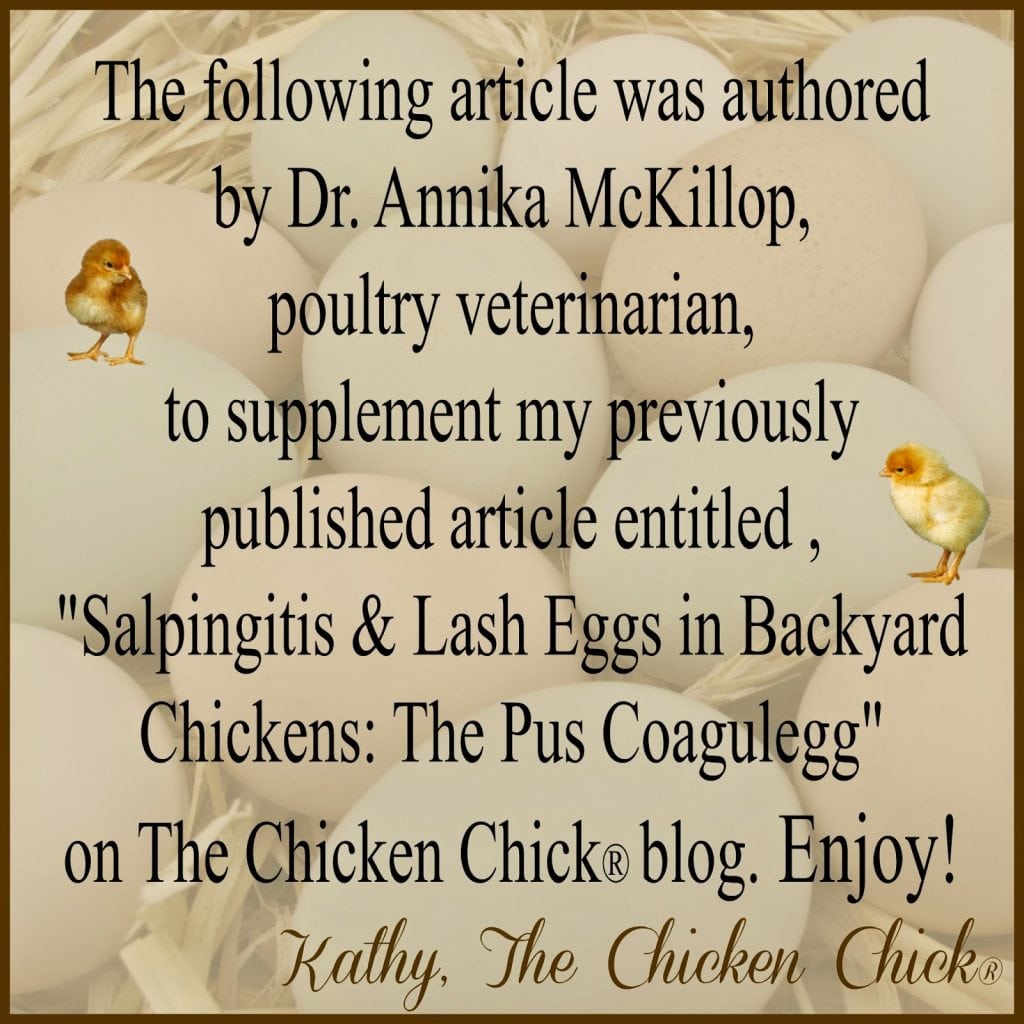

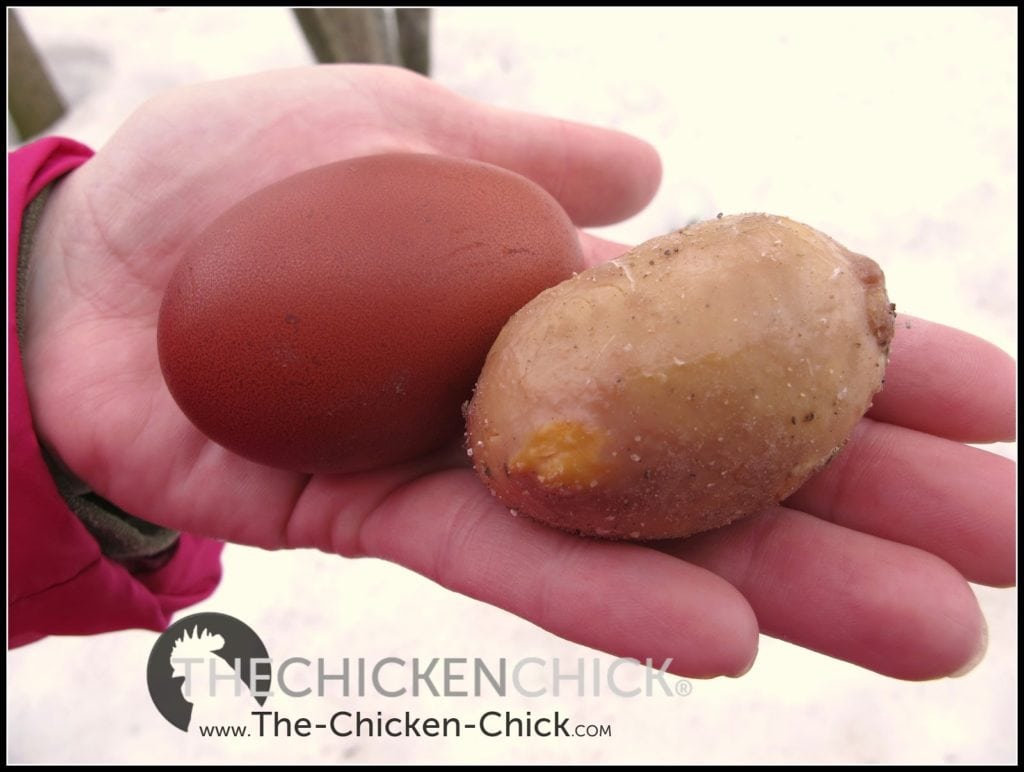
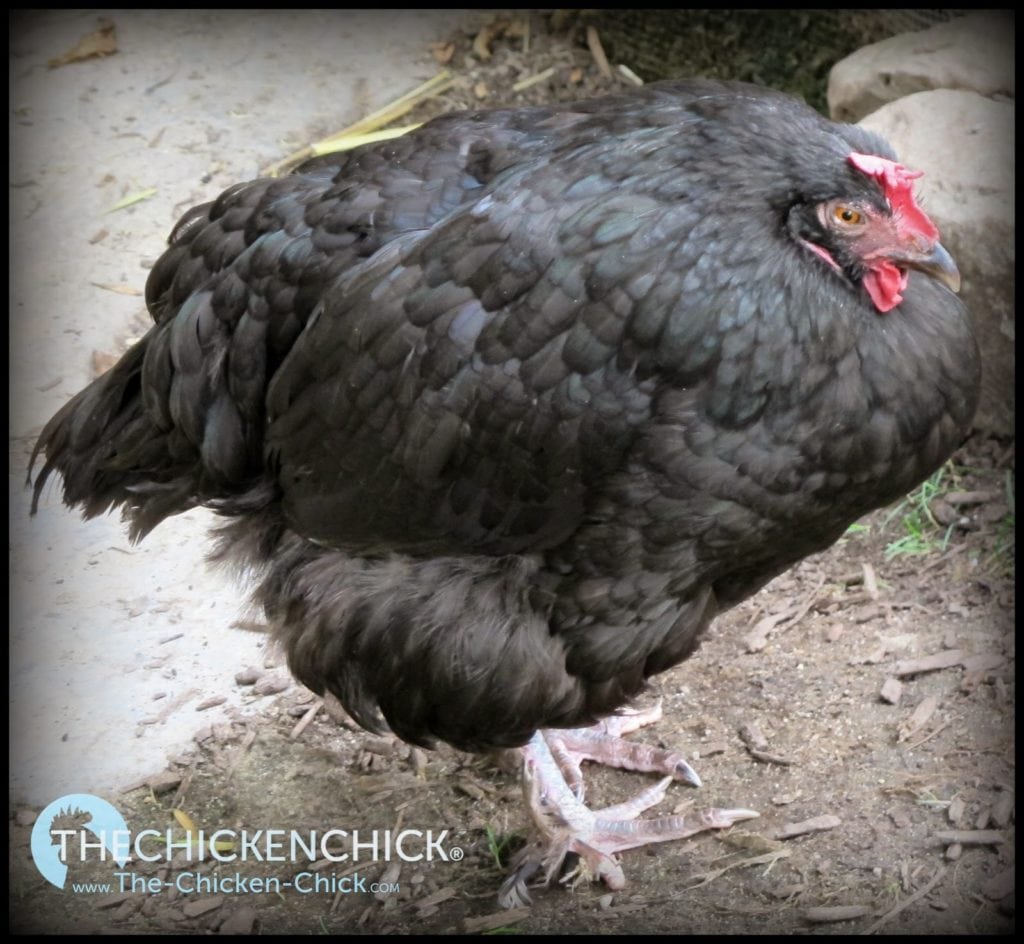
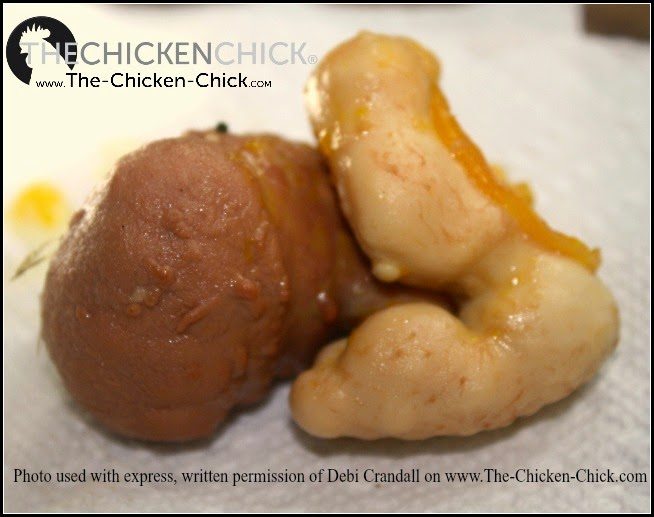
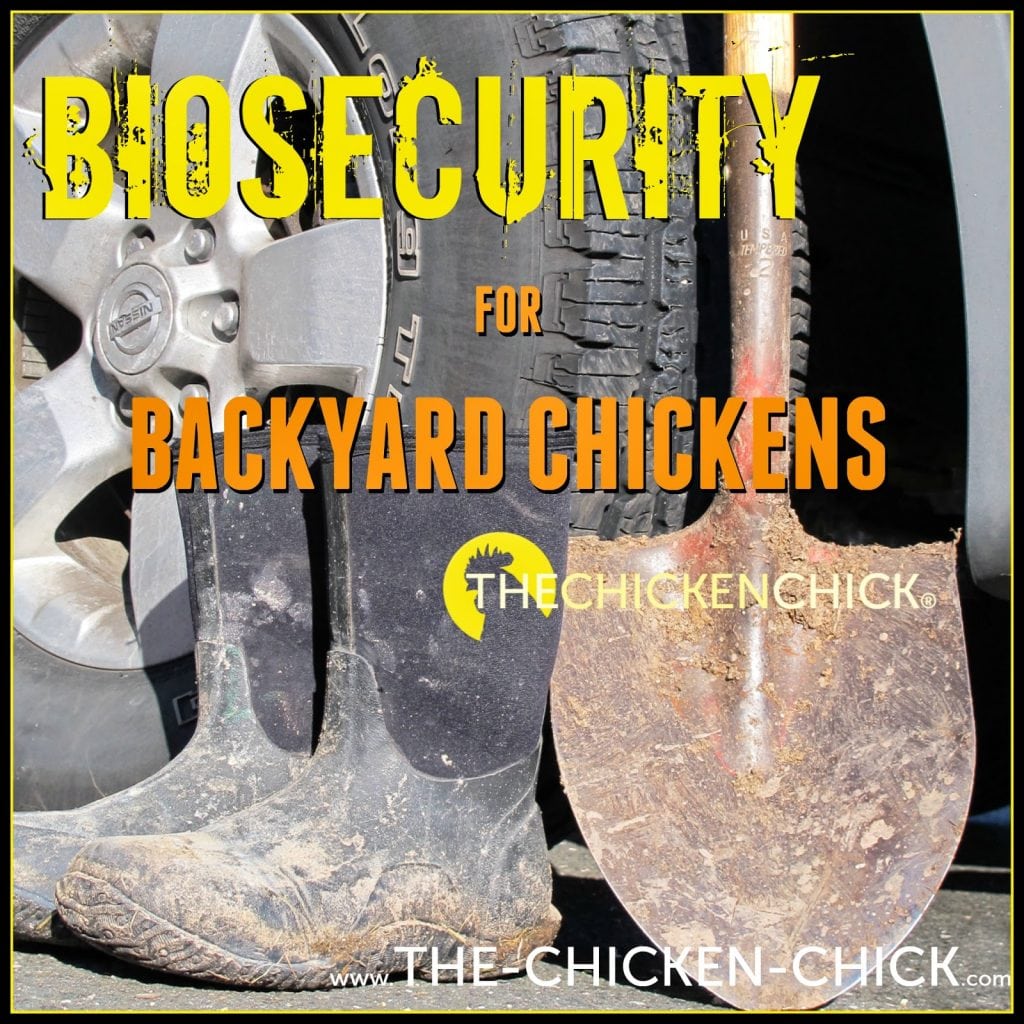

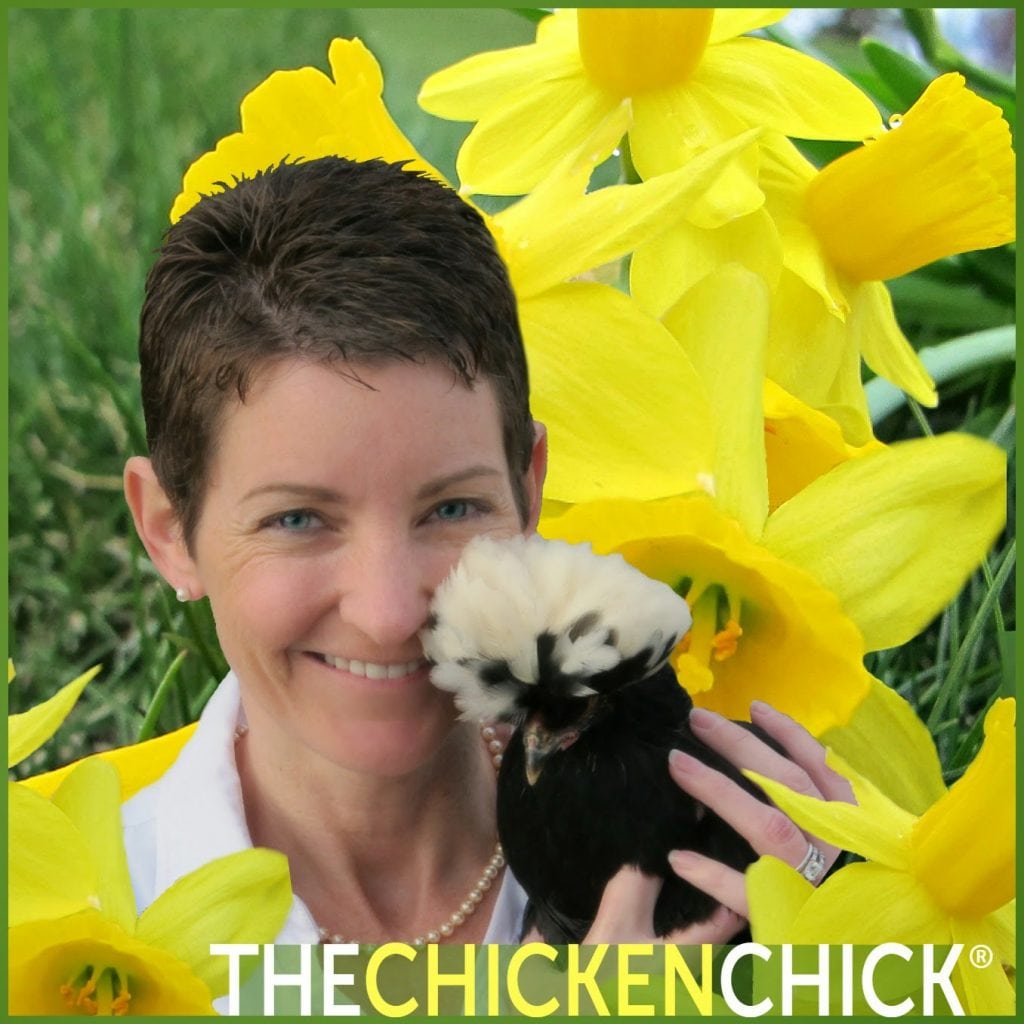






















Very good article, but please proof-read! I’m sorry, but spelling errors really detract from the professional feel of an article.
Do you know what the dosage would be if soluble tetracycline is used? Be good to know.
Great reading and very informative! The article offered some more detail.
Thanks for the article! A few questions: Do the risk factors just reduce the hen’s ability to fight off the infection naturally by compromising her immune system, or are there instances where there is no bacterial or viral cause and the cause is just, say, related to obesity or genetics? And is there a possibility of spontaneous recovery without treatment?
Thanks for another great article. Sorry you lost a precious hen to this. Hopefully mine will avoid this problem.